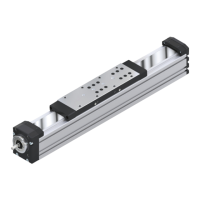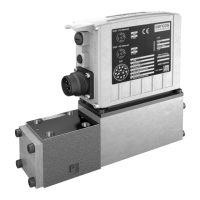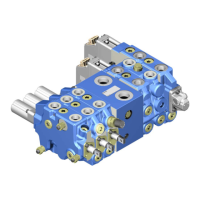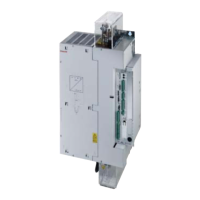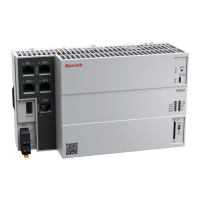30/54 Control blocks for mobile applications | Installation
Bosch Rexroth AG, RE 64025-B/2021-08-12
The control blocks are used in application areas with metric as well as with the
Anglo-American (inch) system of units.
Both the system of units as well as the size of the female thread and stud end
(e.g.threaded plug) must match.
There isarisk ofconfusion due tothe limited ways ofvisually telling them apart.
Observe the parameters contained in the offer drawing. Unless otherwise stated,
in general the SI units apply.
WARNING! Leaky orbursting stud ends!
If a stud end which is of a different measurement system and size with respect to
the female thread is pressurized, the threaded plug may loosen itself or even be
ejected from the stud end in a projectile-like manner. This can result inserious
injury and property damage. Hydraulic fluid can escape from this leakage point.
Use the drawings (offer drawing) to determine the required stud end for each
fitting.
Ensure that, during the assembly of fittings, mounting and threaded plugs, the
items are not confused.
For all female threads, use astud end from thesame system ofunits and
ofthecorrect size.
For an overview ofline connections, refer tothe respective datasheetand the
offer drawing.
Observe the parameters in the standards or the manufacturer's specifications for
the stud ends, fittings and threaded plugs on hydraulic ports. Apart from this, be
aware that tightening torques can also depend on the permissible pressure and
temperature range and the application conditions.
To connect the control block to the hydraulic system:
1� Remove theprotective plugs orthreaded plugs from theports where
theconnections should be made according tothe hydraulic circuit diagram.
2� Make sure thesealing surfaces ofthehydraulic ports and functional surfaces
are not damaged.
3� Use only clean hydraulic lines orflush them before installation.
4� Connect the lines according tothe offer drawing supplied with the machine
diagram. Check whether all ports are piped up orplugged with threaded plugs.
5� Properly tighten thefittings (observe tightening torques!). Mark all properly
tightened fittings, e.g.with apermanent marker.
6� Check all pipes and hose lines and every combination ofconnecting pieces,
couplings orconnecting points with hoses orpipes toensure they are insafe
working condition.
Risk ofconfusion with
threaded connections
Port overview
Tightening torques
Procedure
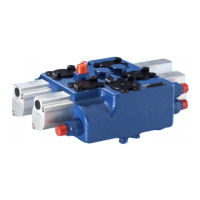
